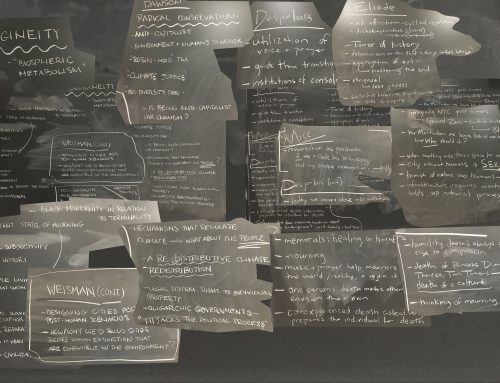The myth of Sisyphus is an example of philosophy of the absurd, representing the futility of life that is spent searching for meaning and clarity in a nonsensical world with no universal truths or values. In the Greek myth, Sisyphus is forced to spent his whole life and all of eternity performing the meaningless and mundane task of pushing a boulder up a mountain, only for it to roll down once it almost reaches the top.
When discussing potential ideas for this group, we discovered the 1967 project Fluids by artist Allan Kaprow, where he built several structures in Berlin made of ice and left them to melt. This work is about temporality, materiality, and what that means for the public since these were built in public spaces.
Our hypothetical art project is to create a large (approx. 10 metre) ice sculpture of a baby, place it in a public space like Union Square or Washington Square Park, and let it melt. Once the sculpture is fully melted, we would put another one in. This project would last about 10 days and would have to be done in the summer to ensure the ice would melt.
Like Kaprow, our sculptures would be made to force viewers to think about their own ephemerality, temporality, and mundane life – repeating tasks to merely distract from boredom until death. The intent of the baby is to represent Schopenhauer’s statement in “The Emptiness of Existence” about the nature of life and death. As far as well-being and the enjoyment of life is concerned; it is “downhill; the dreaminess of childhood, the joyousness of youth, the troubles of middle age, the infirmity and frequent misery of old age, the agonies of our last illness, and finally the struggle with death” (64). This makes us feel as though our own existence is a mistake and as life continues, this fact becomes more and more obvious. Our ice baby would be presented in public in perfect, hopeful form, and as time progresses it would breakdown and “struggle” until it’s ultimate “death”. The baby would then be replaced to show the continuous but futile hope humanity has in life itself.

Recent Comments